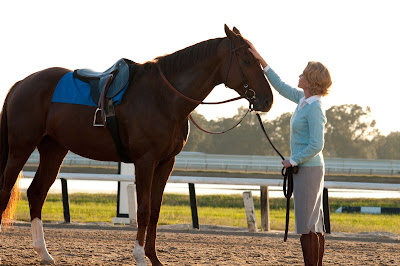The much anticipated Lynda and Stewart Resnick Exhibition Pavilion at Los Angeles County Museum of Art (LACMA) opens on October 2, 2010. It is named after two of the world's leading arts philanthropists whose wide-ranging charitable interests span from medical research to education.
“The facility is unlike almost any in the world” states LACMA CEO and Wallis Annenberg Director Michael Govan, it “improves and expands LACMA’s exhibition galleries, freeing up space to show more of our permanent collection.”
Designed by Italian architect Renzo Piano, the single-story, 45,000-square-foot structure is the largest purpose-built, naturally lit, open-plan museum space in the world. The Resnick Pavilion is a glass and stone-enclosed structure sited immediately north of the Broad Contemporary Art Museum (BCAM), which opened in February 2008.
A cornerstone of Phase II of the museum’s Transformation, the new building complements BCAM architecturally. Both BCAM and Resnick Pavilion feature roof and ceiling elements that flood the galleries with natural light. Resnick Pavilion is also designed with flexibility allowing for the presentation of multiple exhibitions simultaneously as well as large-scale works of art.
Creating an indoor/outdoor effect are the glass-clad northern and southern walls of the building, while the eastern and western walls are covered with travertine marble that originate from the same quarry as the marble used on BCAM’s facade.
“With its enlightening exhibitions and expanding collections, LACMA has truly emerged as a world-class museum. Stewart and I are pleased to make a contribution that builds upon the growing momentum at the institution while also contributing to the cultural vitality of a major twenty-first century art capital” states Lynda Resnick.
The trio of exhibits inaugurating the Resnick Pavilion are: Eye for the Sensual: Selections from the Resnick Collection; Olmec: Colossal Masterworks of Ancient Mexico; and Fashioning Fashion: European Dress in Detail, 1700-1915.
The
Eye for the Sensual Selections from the Resnick Collection features approximately 125 European paintings, sculptures from the sixteenth to the nineteenth century, and decorative arts.
Highlights include Queen Marie-Antoinette's portrait by Elisabeth-Louise Vigée-Lebrun; Jacob Jordaens’s Revel of Bacchus and Silenus, executed by the artist while still in his twenties; and sculptures by artists such as Clodion and Jean-Antoine Houdon.
Eye for the Sensual is curated by J. Patrice Marandel, LACMA’s Robert H. Ahmanson Chief Curator of European Art, and Bernard Jazzar, Curator of the Lynda and Stewart Resnick Collection.
Coinciding with Los Angeles celebrations of the bicentennial of Mexico’s independence and the centennial of the Mexican revolution is
Olmec: Colossal Masterworks of Ancient Mexico. It is the first West Coast presentation of colossal works and small-scale sculptures produced by Mexico’s earliest civilization, which began around 1400 BC and was centered in the Gulf Coast states of Veracruz and Tabasco.
Olmec architects and artists produced the earliest monumental structures and sculptures on the North American continent, including enormous basalt portrait heads of their rulers, which can weigh up to twenty-four tons.
Small-scale jadeite objects, which embody the symbolism of sacred and secular authority among the Olmec, attest to the long-distance exchange of rare resources that existed as early as 1000 BC, and Olmec artists were unsurpassed in their ability to work this extremely hard stone with elementary tools of chert, water, and sand.
Olmec is co-organized by Mexico’s Instituto Nacional de Antropología e Historia, LACMA, and the Fine Arts Museums of San Francisco, and is curated at LACMA by Virginia Fields, senior curator of Arts of the Ancient Americas.
LACMA's first public presentation of its recent acquisition,
Fashioning Fashion: European Dress in Detail, 1700-1915 examines fashion’s sweeping aesthetic and technical developments in luxurious textiles, exacting tailoring techniques, and lush trimmings that occurred over 200 years, from the Age of Enlightenment to World War I.
The major collection of European garments and accessories features an eighteenth-century man’s vest intricately embroidered with powerful symbolic messages relevant to the French Revolution; an evening mantle with silk embroidery, glass beads, and ostrich feathers designed by French couturier Émile Pingat (active 1860-96); and spectacular three-piece suits and gowns worn at the royal courts of Europe.
Fashioning Fashion is curated by Sharon S. Takeda, department head and senior curator, and Kaye D. Spilker, curator, Costume and Textiles at LACMA.
Los Angeles County Museum of Art (LACMA) is located at 5905 Wilshire Boulevard, Los Angeles, CA 90036. For more information call (323) 857-6000 or visit www.lacma.org
 In his debut as feature director, Joseph Kosinski uses geometric shapes and minimalist interiors. Innovative use of light leaves every surface illuminated, including the drinks and the self-illuminated body-molded suits by costume designer Michael Wilkinson. In addition, fans will recognize many of the original film's images and props incorporated in the scene showing Flynn's secret lab.
In his debut as feature director, Joseph Kosinski uses geometric shapes and minimalist interiors. Innovative use of light leaves every surface illuminated, including the drinks and the self-illuminated body-molded suits by costume designer Michael Wilkinson. In addition, fans will recognize many of the original film's images and props incorporated in the scene showing Flynn's secret lab.
































